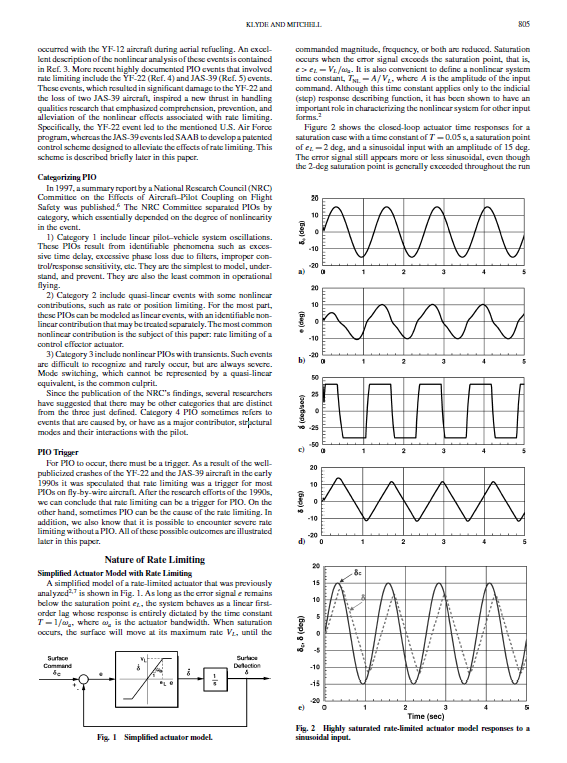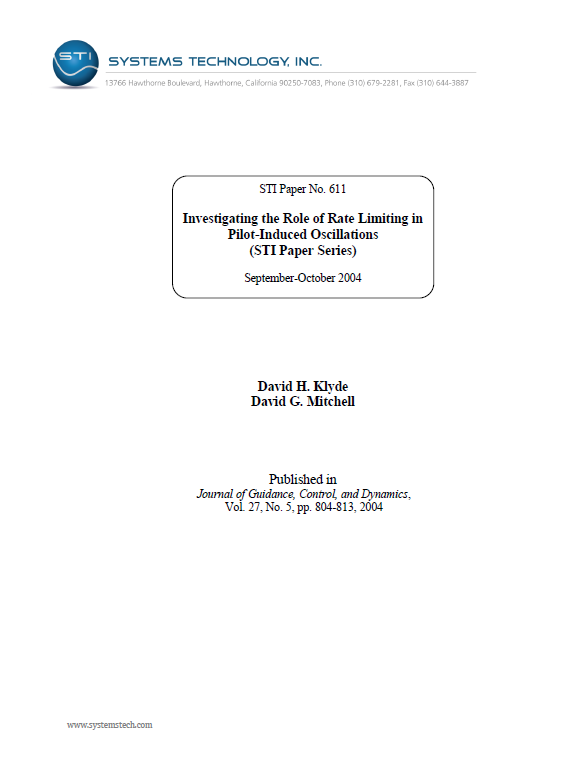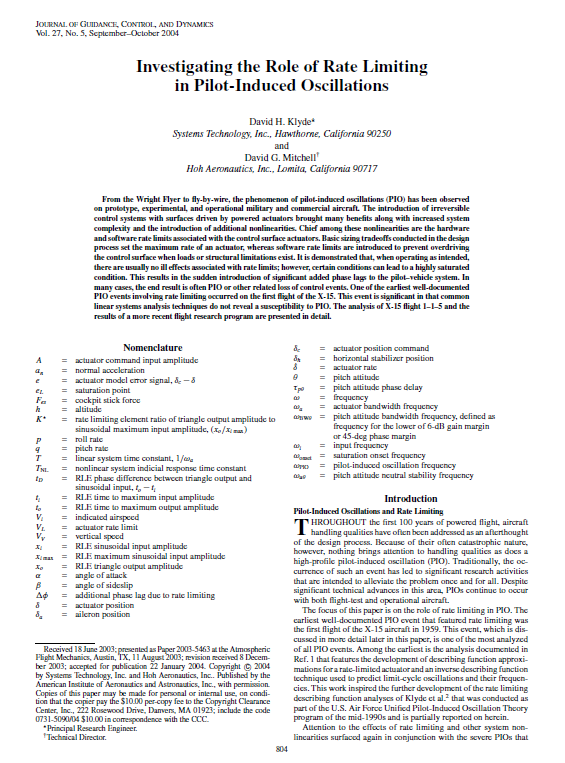
Investigating the Role of Rate Limiting in Pilot-Induced Oscillations
From the Wright Flyer to fly-by-wire, the phenomenon of pilot-induced oscillations (PIO) has been observed on prototype, experimental, and operational military and commercial aircraft. The introduction of irreversible control systems with surfaces driven by powered actuators brought many benefits along with increased system complexity and the introduction of additional nonlinearities. Chief among these nonlinearities are the hardware and software rate limits associated with the control surface actuators. Basic sizing tradeoffs conducted in the design process set the maximum rate of an actuator, whereas software rate limits are introduced to prevent overdriving the control surface when loads or structural limitations exist.
Download Now

